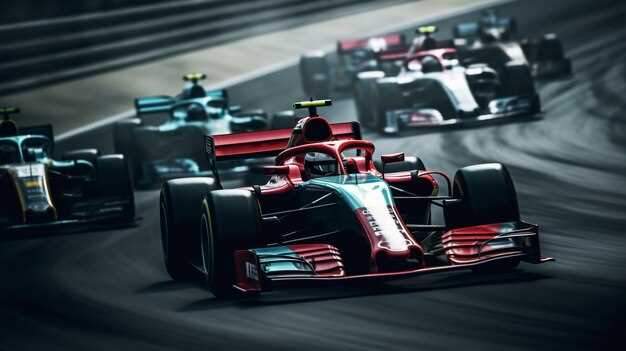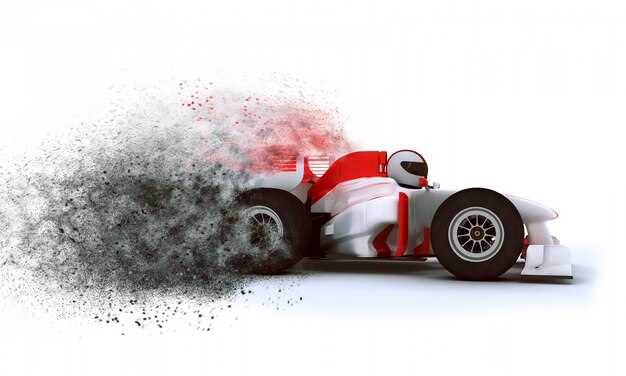
Throughout the rich tapestry of F1 history, rivalries have not only captured the imaginations of fans but have also shaped the very essence of the sport. These fierce contests between drivers have pushed the boundaries of engineering, performance, and human spirit, solidifying their places in the annals of motorsport. Each rivalry brings its unique narrative, filled with triumphs, heartbreaks, and unforgettable moments that resonate far beyond the racetrack.
From legendary duels in the 1970s to electrifying battles of the modern era, these rivalries reflect the passion and dedication of the individuals behind the wheel. They highlight the intense competition that can drive innovation within teams and elevate the sport to new heights. With each passing season, the stakes rise, making every race a stage for these athletes to etch their names into F1 lore.
In this article, we will explore some of the most iconic rivalries in F1 history, examining how they transformed not only the drivers involved but also the landscape of motorsport itself. Join us as we dive into the stories of fierce competitors whose legacies continue to inspire future generations.
Analyzing the Senna vs. Prost Rivalry: Lessons in Competitive Spirit
The rivalry between Ayrton Senna and Alain Prost stands as one of the most compelling narratives in F1 history. Their competitive spirit, contrasting personalities, and dramatic confrontations captivated fans and shaped the sport’s legacy. Senna, the passionate, aggressive driver, often showcased emotional fervor, while Prost, known as “The Professor,” approached racing with calculated precision and strategy.
This rivalry ignited during the late 1980s and early 1990s, primarily while both drivers raced for McLaren. Their contrasting styles highlighted the essence of competition in F1. Senna’s fearlessness frequently clashed with Prost’s tactical mindset, igniting fierce battles on and off the track. Their infamous collisions, notably at the 1988 and 1989 Japanese Grands Prix, exemplify the intense rivalry that polarized fans and created an electric atmosphere in the paddock.
These encounters reveal critical lessons about competitive spirit. First, the importance of resilience is evident in both drivers. Senna’s ability to rebound from setbacks, such as his heartbreaking defeat in 1989, showcased a relentless pursuit of excellence. Conversely, Prost’s strategic adjustments following defeats underscored the value of adaptability in competition.
Moreover, the Senna-Prost saga teaches the significance of respect in rivalry. While their battles were fierce, there was ultimately a shared acknowledgment of each other’s talents. This mutual respect, albeit sometimes overshadowed by animosity, is a cornerstone for healthy competition. Their rivalry pushed both to unimaginable heights, evolving their racing philosophies and skill sets.
In summary, the Senna vs. Prost rivalry is a cornerstone of F1 history, rich in lessons regarding resilience, strategy, and respect. Their story not only defines an era but also serves as a timeless example of how competitive spirit can elevate motorsport to extraordinary heights.
Hamilton vs. Rosberg: The Personal Feud that Shaped Modern F1

The rivalry between Lewis Hamilton and Nico Rosberg stands as one of the most intense competitions in the history of Formula 1. Their time as teammates at Mercedes from 2013 to 2016 not only redefined their careers but also transformed the landscape of modern F1 racing.
Initially, the two drivers enjoyed a cooperative relationship, achieving numerous victories for the team. However, as success mounted, so did the pressure and stakes involved. By 2014, the competition escalated dramatically when both drivers were in prime form, leading to a series of controversial races that underscored their fierce determination to win.
The tensions reached a peak in 2016, culminating in a bitter showdown for the championship. One of the defining moments was the infamous collision during the European Grand Prix, which highlighted the personal animosity that had developed. This incident not only impacted their race results but also the dynamics within the Mercedes team, showcasing how personal feuds can influence competitive environments.
Hamilton’s charisma and aggressive driving style often clashed with Rosberg’s more calculated approach. The media frequently amplified their rivalry, framing it as a classic battle between the “good guy” and the “villain.” As both drivers pushed each other to their limits, the world witnessed a unique blend of respect and hostility, which remains a cornerstone of their legacy.
Ultimately, Rosberg’s victory in 2016 was not just a triumph on the track; it also marked the climax of a personal saga that defined an era in F1. Following this, Rosberg’s shocking retirement added an enigmatic twist to their rivalry, leaving fans and analysts pondering what could have been.
Hamilton vs. Rosberg remains a pivotal chapter in Formula 1, illustrating how personal relationships and competition can converge to shape the sport’s narrative. This rivalry set new standards for intensity and passion, influencing future generations of drivers in the pursuit of excellence within F1.
Clark vs. Hill: How Their Rivalry Influenced Engineering in F1

The rivalry between Jim Clark and Graham Hill is one of the most compelling narratives in the history of Formula 1. Spanning the 1960s, their competition not only captivated fans but also spurred significant advancements in engineering within the sport. Both drivers brought unique strengths to the table, with Clark known for his smooth driving style and incredible car control, and Hill recognized for his tactical approach and mechanical understanding.
Clark, driving for Lotus, was instrumental in the development of the revolutionary Lotus 25, which featured a groundbreaking monocoque chassis that improved aerodynamics and reduced weight. This design allowed Clark to dominate races, showcasing the importance of engineering innovation in achieving performance. His ability to extract the maximum from the car’s capabilities pushed teams to rethink their strategies and invest in more advanced technologies.
On the other hand, Hill, who drove for BRM and later for Lotus as well, emphasized the synergy between driver feedback and car design. His insights into handling characteristics and performance dynamics encouraged engineers to focus on driver comfort and adaptive tuning. This focus on collaboration between drivers and engineers became a defining element in vehicle development, leading to an evolution in how cars were built and tuned for optimal performance.
The intensity of their rivalry sparked a competitive spirit that drove both teams to innovate continuously. The pursuit of speed led to significant advancements in suspension systems, tire technology, and aerodynamics. The legacy of Clark and Hill is not only reflected in their individual accolades but also in the lasting influence they had on the engineering principles that define F1 today.
Ultimately, the Clark-Hill rivalry changed the landscape of Formula 1, demonstrating how fierce competition can drive engineering excellence. Their contributions helped lay the foundation for modern F1, molding the sport into a thrilling blend of skill and technological prowess.
